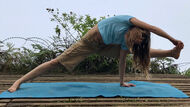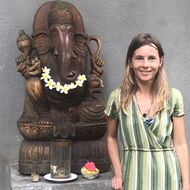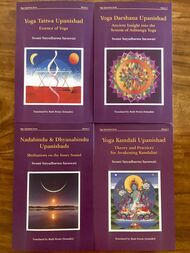True Essence of Yoga
Yoga is the Union between the individual and supreme consciousness. Yoga is not the philosophy or the ultimate goal, but the set of practices to achieve this Union. Everybody can establish it. Although Yoga initially had belonged to Tantric tradition, it was later adopted by Vedic scholars. According to Yoga Upanishad Yoga is the balancing of the sun and moon, the vital and mental energies, and thereby awakening the kundalini force, which most of the people has in dormant, let me say “mummified” state. In modern times, Yoga is deprived of its real meaning and usually is used as fitness or relaxation remedy but not for the liberation of consciousness.
There are 8 limbs of Yoga. Yama (ethical behavior, external code of conduct), Niyama (inner discipline, inner code of conduct), Asana (steady posture), Pranayama (breathing technics, control of breathing) these 4 limbs pertain to the Outer or External Branch of Yoga and known as Hatha Yoga. The other four such as Pratyahara (sensory withdrawal), Dharana (one pointed concentration), Dhyana (meditation, meditative flow) and Samadhi (pure awareness) pertain to the Inner Branch and are known as Raja Yoga.
Moderate eating and light food are believed to be the most important in practicing Yoga ethics (Yama) because if we eat heavy and inappropriate food too much our body becomes gross, choked up with food and quite “earthy”, “material”. Among Niama, the principle of nonviolence (ahimsa) is most important because our mind is easily disturbed by angry thoughts, words, actions that increase tamasic and rajasic gunas (qualities of nature), while Yoga is appealed to increase sattva – peace and inner balance.
Yoga patiently pulls out by tail our qualities transforming them, and after that, our perception of the world and our life change as well. One should not expect immediate results because Yoga is also the path and process. Although, you will definitely witness the changes in 5-10 years. Because we are influenced by different gunas (qualities of nature), we are inclined to different styles of Yoga. Yoga changes not only our physical body, but our subtle body and our perception of World and ourselves as well.
Many things in our world are free and available to all by default, for example, we did not make any efforts to see and to perceive this world, but we cannot retain anything in this world at the same time. Because our identification with the EGO and then with the Body we perceive this Layer of reality (Manifest World) too seriously.
By lucky chance, the Author got Yoga Upanishads, the storehouse of striking ancient knowledge. While they were compelled after Yoga Sutras of Patanjali, the meditation technics (vidyas) described in them are pre-Patanjali. I express my thanks to authors and commentators of Yoga Upanishads and humbly recommend them for reading to all Yoga disciples.

Yoga at World's End

Nada Yoga







